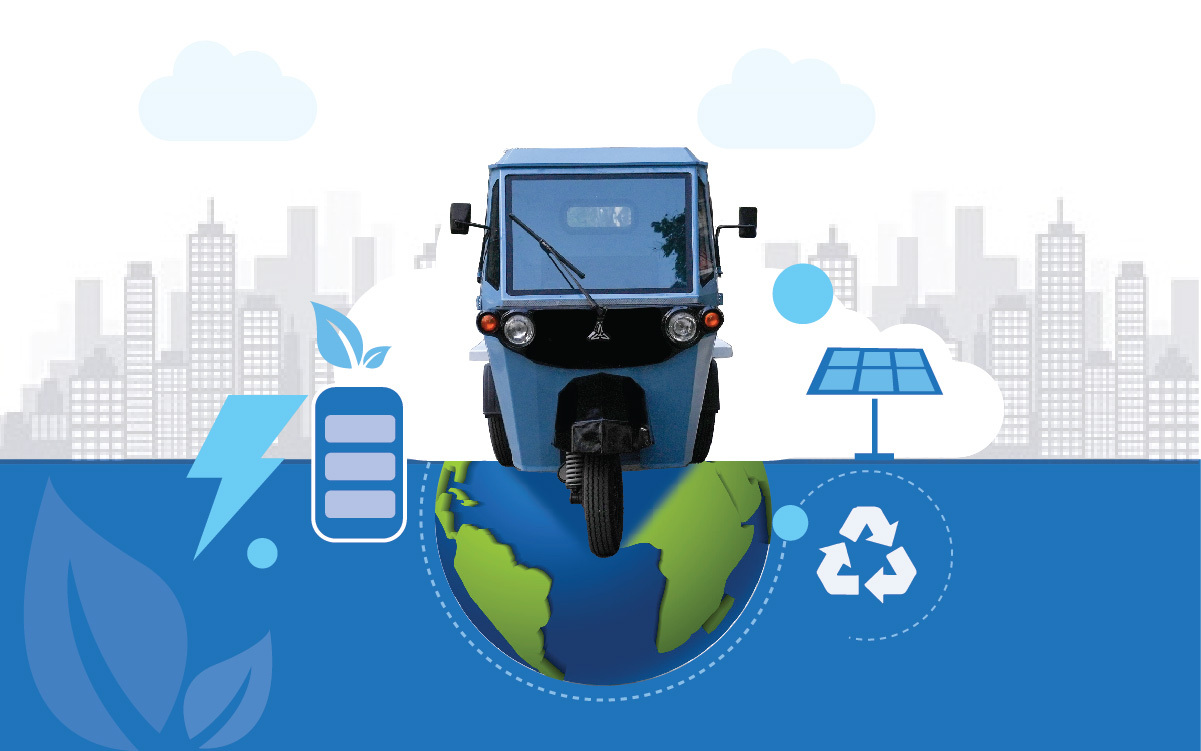The Environmental Benefits of Commercial Electric Vehicles in Urban India
In the face of rising pollution and traffic congestion, the adoption of commercial electric vehicles (EVs) in India offers a promising path toward sustainability. As Indian cities shift toward greener energy solutions, the transition to commercial EVs can reduce urban air pollution, decrease fossil fuel dependency and make significant strides toward meeting India’s environmental goals. This blog examines the environmental impact of EV commercial vehicles, from air quality improvements to carbon footprint reduction.
How Commercial Electric Vehicles in India Benefit the Environment
1. Reduction in Air Pollution
One of the most significant environmental benefits of commercial electric vehicles in India is their potential to reduce air pollution. Cities like Delhi and Mumbai, often grappling with hazardous air quality levels, could experience a decrease in harmful emissions such as nitrogen oxides and particulate matter. According to the International Council on Clean Transportation, switching from combustion engine trucks and buses to EV commercial vehicles could substantially improve urban air quality.
2. Decreasing Dependence on Fossil Fuels
Most commercial vehicles, such as trucks and buses, traditionally run on diesel, contributing to CO₂ emissions. By adopting EV commercial vehicles powered by electricity, India can reduce its reliance on fossil fuels. This transition will also support India’s commitment to the Paris Agreement, aiming to reduce carbon emissions by 33-35% by 2030. Additionally, as renewable energy sources become more prevalent, commercial EVs powered by cleaner energy sources will have an even lower carbon footprint.
3. Reduction in Noise Pollution
EV commercial vehicles in India are generally quieter than traditional fuel-based counterparts, helping decrease noise pollution levels in busy metropolitan areas. This reduction benefits not only urban dwellers but also businesses and industries that operate near residential areas. With smoother and quieter engines, EVs contribute to a more peaceful urban environment, aligning with sustainable development goals for livable cities.
Environmental Impact Case Studies of Commercial EV Vehicles in Indian Cities
1. Electric Buses in Bangalore
Bangalore has introduced electric buses to reduce urban pollution and provide clean public transportation. Studies show a marked reduction in the city’s greenhouse gas emissions due to the adoption of these buses, positioning Bangalore as a leading example of the environmental benefits of commercial electric vehicles.
2. Electric Delivery Vehicles in Delhi
Delhi has seen a rise in commercial EVs in the logistics sector, particularly with electric delivery trucks for last-mile delivery. Companies are adopting EV commercial vehicles for their efficiency and lower environmental footprint. This shift not only cuts emissions but also supports the city’s clean-air initiatives.
3. Commercial EV Charging Infrastructure in Mumbai
In Mumbai, public and private investments in commercial EV chargers are making it easier for businesses to operate electric delivery vehicles and trucks. The city’s commitment to clean energy includes expanding the availability of commercial EV chargers, which can support larger fleets and encourage businesses to transition to electric transportation.
Challenges and Opportunities in the Adoption of Commercial EV Vehicles in India
1. Infrastructure for Commercial EV Chargers
A critical component in supporting the growth of commercial EVs is the availability of reliable commercial EV chargers. Currently, India’s EV charging infrastructure is evolving, but it still requires significant expansion to meet the demands of large fleets. Urban centers need strategically placed commercial EV chargers to support long-distance travel and ensure minimal downtime for commercial EVs. Public-private partnerships and government incentives play a pivotal role in scaling up this infrastructure.
2. Cost Considerations and Economic Viability
While the long-term savings from commercial EVs, such as reduced fuel and maintenance costs, are promising, the initial purchase price remains a challenge. Incentives and subsidies can help offset these costs, making commercial EV vehicles more accessible for businesses.
Government Policies Supporting Commercial Electric Vehicles in India
The Indian government is actively promoting the adoption of commercial EVs. Policies like the PM Electric Drive Scheme initiative provide subsidies and incentives to make commercial EVs more affordable. Additionally, incentives to develop commercial EV charger infrastructure in metropolitan areas signal the government’s commitment to making electric mobility a viable option for businesses.
For an in-depth understanding of government support for EV adoption, read our detailed guide to government incentives for electric three wheelers.
The Road Ahead: Scaling Commercial EV Adoption in Indian Cities
While the environmental benefits of commercial electric vehicles in India like Astro Navya are undeniable, broader adoption depends on overcoming challenges like high upfront costs and limited charging infrastructure. Expanding the number of commercial EV chargers is essential, along with continued government support and technological advancements. With steady progress in these areas, India can look forward to an eco-friendlier commercial transport sector.
Conclusion
The environmental impact of commercial EVs in India has the potential to reshape urban landscapes by reducing emissions, improving air quality and minimizing noise pollution. As more businesses and cities turn to commercial electric vehicles and EV commercial vehicles, India moves closer to a sustainable, clean energy future.




